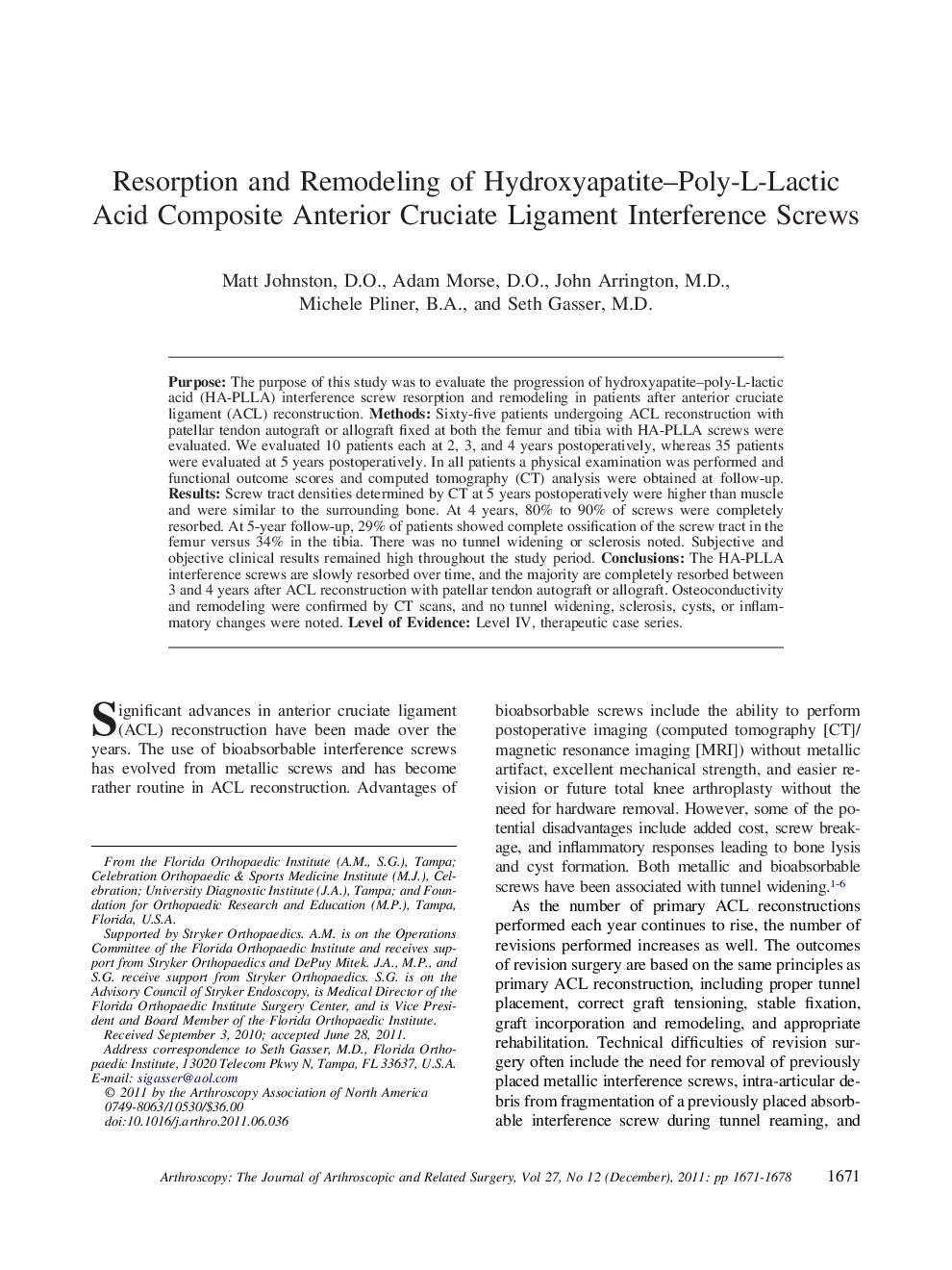| Article ID | Journal | Published Year | Pages | File Type |
|---|---|---|---|---|
| 4044959 | Arthroscopy: The Journal of Arthroscopic & Related Surgery | 2011 | 8 Pages |
PurposeThe purpose of this study was to evaluate the progression of hydroxyapatite–poly-L-lactic acid (HA-PLLA) interference screw resorption and remodeling in patients after anterior cruciate ligament (ACL) reconstruction.MethodsSixty-five patients undergoing ACL reconstruction with patellar tendon autograft or allograft fixed at both the femur and tibia with HA-PLLA screws were evaluated. We evaluated 10 patients each at 2, 3, and 4 years postoperatively, whereas 35 patients were evaluated at 5 years postoperatively. In all patients a physical examination was performed and functional outcome scores and computed tomography (CT) analysis were obtained at follow-up.ResultsScrew tract densities determined by CT at 5 years postoperatively were higher than muscle and were similar to the surrounding bone. At 4 years, 80% to 90% of screws were completely resorbed. At 5-year follow-up, 29% of patients showed complete ossification of the screw tract in the femur versus 34% in the tibia. There was no tunnel widening or sclerosis noted. Subjective and objective clinical results remained high throughout the study period.ConclusionsThe HA-PLLA interference screws are slowly resorbed over time, and the majority are completely resorbed between 3 and 4 years after ACL reconstruction with patellar tendon autograft or allograft. Osteoconductivity and remodeling were confirmed by CT scans, and no tunnel widening, sclerosis, cysts, or inflammatory changes were noted.Level of EvidenceLevel IV, therapeutic case series.
